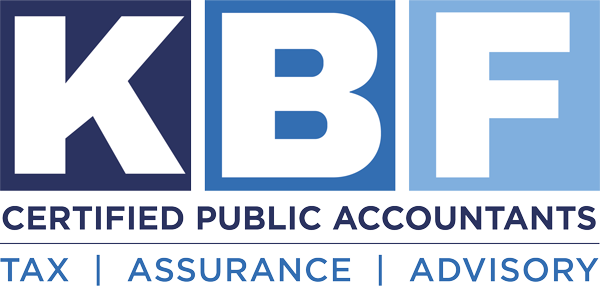Accounting for Income Taxes – A Path Towards Simplicity – ASU 2009-06

The Financial Accounting Standards Board (FASB) establishes financial accounting and reporting standards for public and private companies and not-for-profit organizations that follow Generally Accepted Accounting Principles (GAAP). The FASB is recognized by the Securities and Exchange Commission as the designated accounting standard setter for public companies. FASB standards are recognized as authoritative by many other organizations, including state Boards of Accountancy and the American Institute of CPAs (AICPA).
The FASB issues an Accounting Standards Update (“ASU”) to communicate changes to the FASB Codification, including changes to non-authoritative SEC content. Since September 2009, the FASB has issued various ASU’s that have a direct impact to Accounting Standards Codification (“ASC”) 740 Income Taxes. This is the first in a series of KBF Technical Alerts that discusses the various ASUs issued by the FASB since 2009 related to ASC 740.
Accounting for Uncertain Tax Positions – Background
The rules for the accounting for uncertain tax positions (“UTPs”) are found in ASC 740. The rules clarify the accounting for uncertainty in income taxes recognized in an entity’s financial statements. They establish rules for recognizing and measuring tax positions taken in an income tax return.
The UTP rules mandate that companies evaluate all material income tax positions for periods that remain open under applicable statutes of limitation, as well as positions expected to be taken in future returns. The UTP rules then impose a recognition threshold on each tax position. A company can recognize an income tax benefit only if the position has a “more likely than not” (i.e., more than 50 percent) chance of being sustained on the technical merits. In making this determination, the possibility that the company will not be audited, or the position will escape an auditor’s notice, cannot be taken into account.
If a tax position does not meet the “more likely than not” recognition threshold in the first tax period, the benefits cannot be recognized. However, they may be recognized later if: (1) the threshold is met in a later period; (2) the matter is resolved with the appropriate taxing authority; or (3) the statute of limitations expires. The UTP rules call for derecognition of a previously recognized position in the first tax period in which it is no longer “more likely than not” that the position would be sustained on its technical merits.
If a position passes the recognition threshold, then as a second step, the UTP rules require that the position be measured to determine the amount of benefit to recognize in the financial statements. The tax position is measured at the largest amount of benefit that is greater than 50% likely of being realized upon settlement.
Differences between tax positions taken in a tax return and amounts recognized in the financial statements will generally result in (1) an increase in a liability for income taxes payable or a reduction of an income tax refund receivable; (2) a reduction in a deferred tax asset or an increase in a deferred tax liability; or (3) both (1) and (2).
The UTP rules also provide guidance on interest and penalties, accounting in interim periods, disclosure, and transition.
The UTP rules apply to all entities that prepare GAAP financial statements.[1]
[1] Accounting for Uncertain Tax Positions (FIN 48) Manager, Wolters Kluwer
Disclosure Requirements
ASC 740-10-50-15 and ASC 740-10-50-19 provides unrecognized tax benefit related disclosure guidance.
Specifically, ASC 740-10-50-15 provides that all entities shall disclose all of the following at the end of each annual reporting period presented:
- The total amounts of interest and penalties recognized in the statement of operations and the total amounts of interest and penalties recognized in the statement of financial position
- For positions for which it is reasonably possible that the total amounts of unrecognized tax benefits will significantly increase or decrease within 12 months of the reporting date:
- The nature of the uncertainty
- The nature of the event that could occur in the next 12 months that would cause the change
- An estimate of the range of the reasonably possible change or a statement that an estimate of the range cannot be made
- A description of tax years that remain subject to examination by major tax jurisdictions
In addition to the above, and prior to the issuance of ASU 2009-06, ASC 740-10-50(a) & (b) required that an entity would have to disclose all of the following at the end of each annual reporting period presented:
a. A tabular reconciliation of the total amounts of unrecognized tax benefits at the beginning and end of the period, which shall include at a minimum:
- The gross amounts of the increases and decreases in unrecognized tax benefits as a result of tax positions taken during a prior period
- The gross amounts of increases and decreases in unrecognized tax benefits as a result of tax positions taken during the current period
- The amounts of decreases in the unrecognized tax benefits relating to settlements with taxing authorities
[1] Accounting for Uncertain Tax Positions (FIN 48) Manager, Wolters Kluwer
* For a downloadable and printable version of this article please click here.
